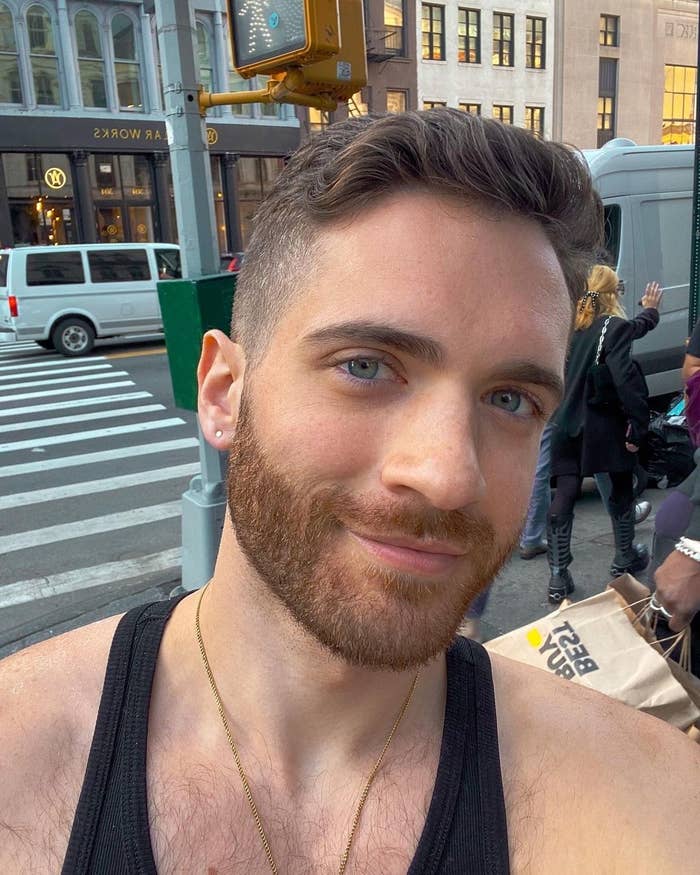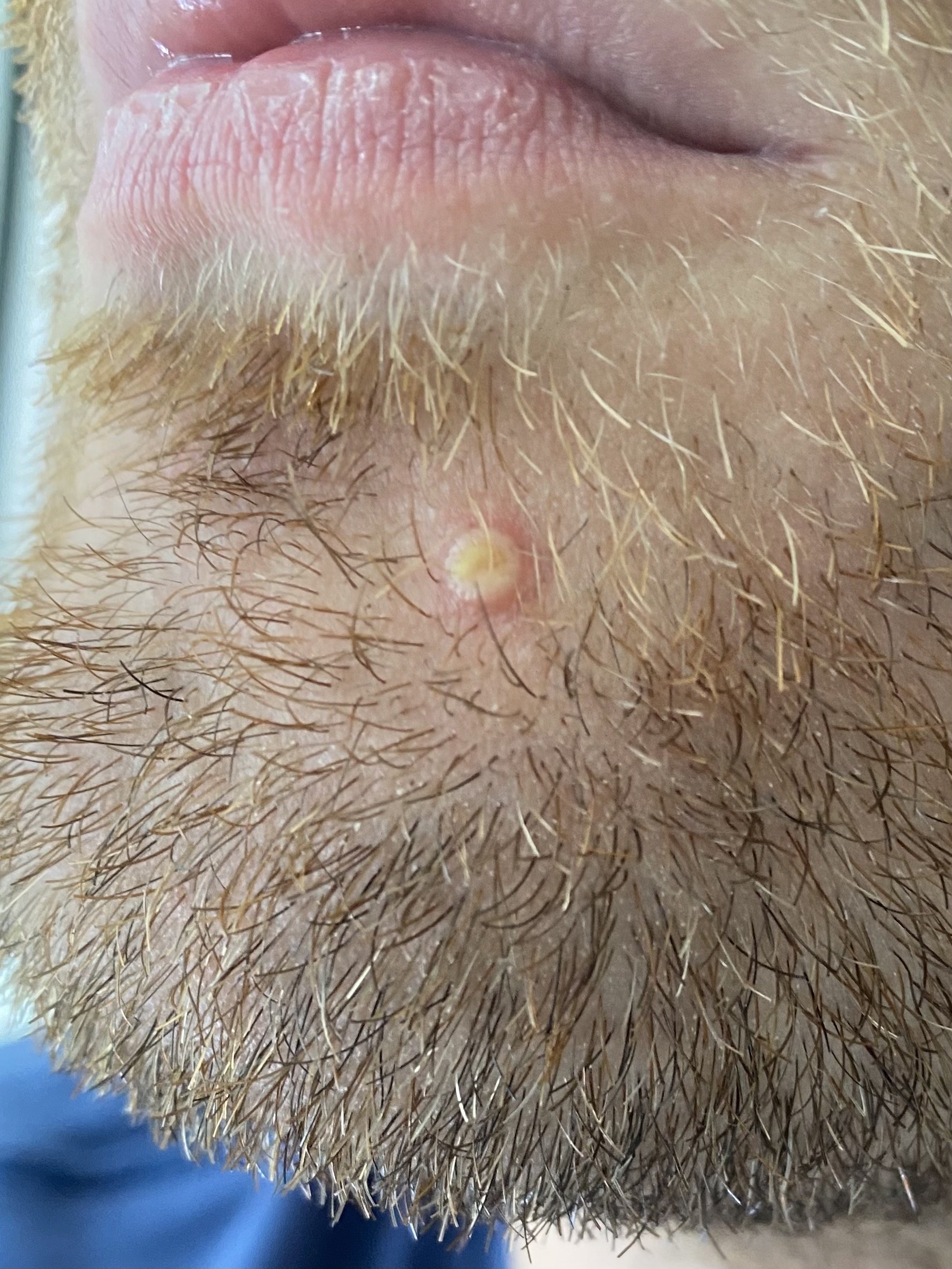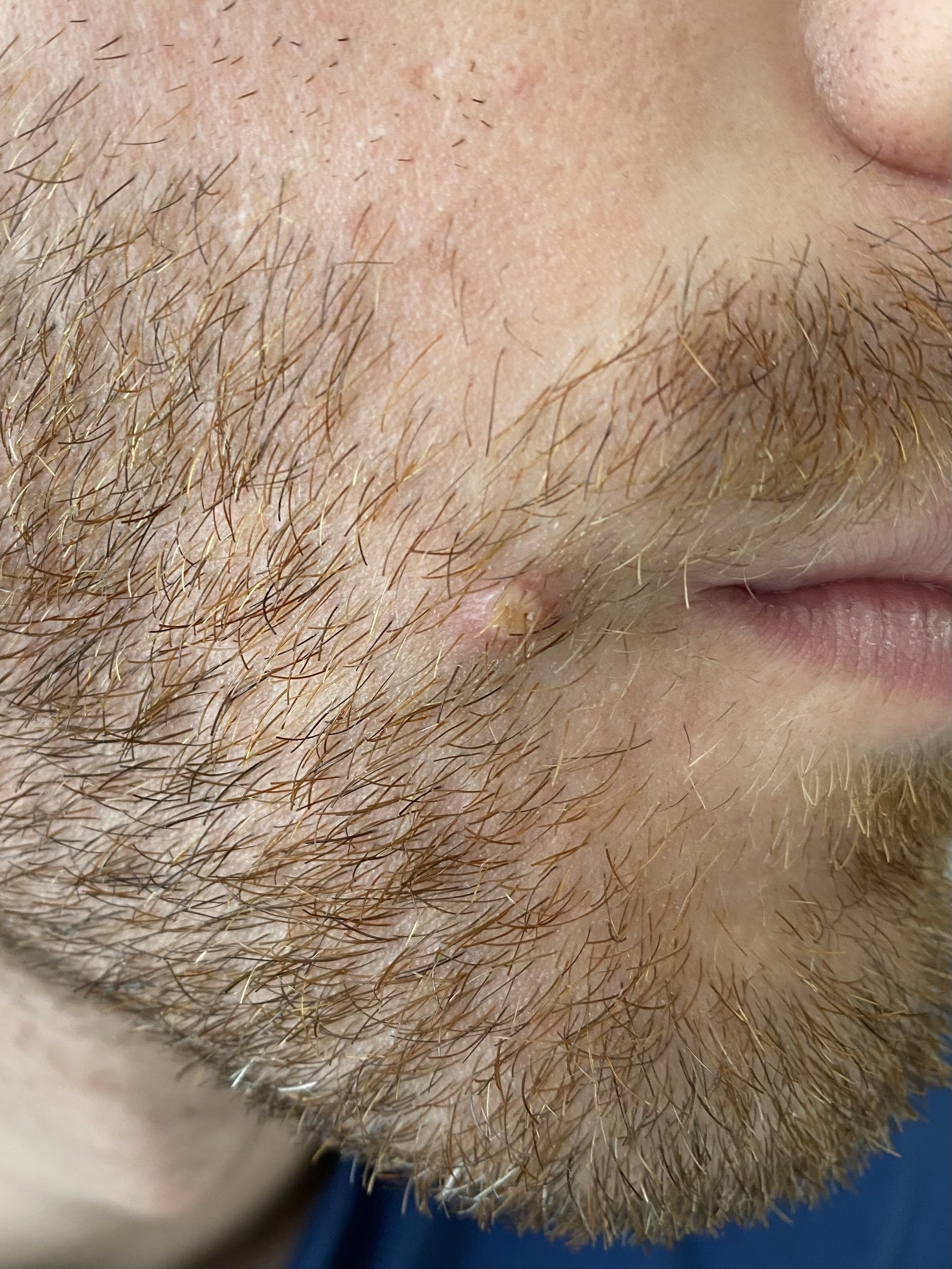Hi, I’m Matt Ford. I’m a creative who acts, writes, and sings, and I work for myself as a freelance video producer/editor. In fact, I used to work at BuzzFeed Video.

I also currently have monkeypox. Here's what my experience has been like so far and why you should take it seriously. Trust me, you don't want to have it.
1. As of about a month ago, I had read articles and seen a few tweets about a monkeypox outbreak happening in Europe and potentially spreading to the US — predominantly affecting queer men, reports said — but I wasn’t worried. It seemed like a far-off problem in a vague world of potential inconveniences, eclipsed by bigger societal problems.
Days after unusual clusters of the rare monkeypox virus emerged in Europe, New York City health authorities announced on Thursday that they were investigating a possible case of the rare disease. https://t.co/imnmmtfPCT
2. On Friday, June 17, that quickly changed. I received a call from a friend in LA who informed me that he had tested positive for monkeypox and that I might have been exposed the weekend prior via skin-to-skin contact. Sure enough, I checked myself for spots and noticed a couple of lesions in the underwear zone.
According to the Centers for Disease Control and Prevention, the incubation period is roughly 1–2 weeks, which tracks for when I was likely exposed.
3. The next day, I began to have intense flu-like symptoms: a fever, full-body chills, night sweats, a cough, a sore throat, and swollen lymph nodes. This would last about a week.
4. On Monday, June 20, I went to the doctor, and they took a culture swab that was sent to the LA County Department of Public Health. They told me the following Thursday what I already knew: It was positive.
The health department also collected information from me about my symptoms, my recent travel, how I could’ve been exposed, and who else I could have exposed.
5. A nurse started to check in on my condition daily via phone call or text, mainly to see if I needed urgent assistance.
6. I was also issued a stay-at-home order by email. It basically said that I'm legally mandated to stay at home and isolate, except for medical visits or emergencies, until fully recovered (more on what that means in a moment).
7. Meanwhile, my symptoms intensified. The lesions I had already noticed in the underwear zone were becoming more intense and quite painful. They filled with pus and became itchy. More lesions appeared on my face and random parts of my body.

8. It was painful to the point that I couldn’t sleep some nights. The pain was a dull, sore constant, with fun little spikes of sharp pain if I moved the wrong way.
9. All that seemed to help were frequent baths and ointments — until I went back to the doctor and was prescribed narcotic painkillers. Even those were only so-so at managing the pain.
10. The flu-like symptoms abated slowly. By Friday, a week after I'd first detected lesions, I felt mostly normal — at least, besides the lesions, which continued to appear. To date, I have counted more than 25, and they’re all over: on my arms, legs, hands, feet, and scalp.

11. Thankfully, I’m feeling much better — at this point, it’s mostly a waiting game for the lesions to heal.
According to the CDC, an individual is considered fully recovered and noncontagious only after every lesion has scabbed and fallen off and has fresh, healthy skin underneath. The estimated time is 2–4 weeks from exposure to full recovery.
12. My experience tracks with that of others I'm linked to, but the severity of monkeypox can vary from person to person.
Some people I know who've had it reported mild cases, but the exposure web I'm linked to has had some severe symptoms. I'm currently struggling to sleep through the night. This shit sucks.
In fact, according to the CDC, "Sometimes, people get a rash first, followed by other symptoms. Others only experience a rash."
13. To date, no one has died from monkeypox during the current outbreak in the United States. The strains currently circulating in the US are far less deadly than those stemming from a different branch of the monkeypox evolutionary tree, and the CDC says that "[o]ver 99% of people who get this form of the disease are likely to survive."
The CDC cautions, however, that "people with weakened immune systems, children under 8 years of age, people with a history of eczema, and people who are pregnant or breastfeeding may be more likely to get seriously ill or die."
14. While men who have sex with men currently make up the majority of cases, anyone can get monkeypox. It is NOT a "gay disease," as Patrick Waechter recently explained for BuzzFeed News — a fact that bears repeating to tamp down the potential for stigma.
15. Nor is monkeypox considered a sexually transmitted infection. According to the CDC, it can spread between people via "direct contact with the infectious rash, scabs, or body fluids," through "respiratory secretions during prolonged, face-to-face contact, or during intimate physical contact," and by "[t]ouching items (such as clothing or linens) that previously touched the infectious rash or body fluids."
For those asking how I got it: It was through skin-to-skin contact. Here’s the CDC on how it spreads and what the spots look like (I can confirm):
16. I decided last week to speak out about my case on social media to hopefully curb more infections ahead of New York Pride. (The response has been mostly positive — a surprise given, you know, the internet!)
Monkeypox PSA https://t.co/yWfVLk8rwz
17. In the process, many friends and acquaintances reached out to say they either also had it or had been exposed. While it was reassuring to know I wasn’t alone, it also made me worry that cases were being severely undercounted.
"We have no concept of the scale of the monkeypox outbreak in the US," New York University biologist Joseph Osmundson told NPR last week.
18. Thankfully, there are two monkeypox vaccines. Vaccination is beneficial both to people who've yet to be exposed and, to some extent, to people who have already been exposed because it can make their cases milder.
The unfortunate news is that only very limited quantities of the vaccines have so far been made available — and in larger cities at that. The manufacturer of the newer, two-dose Jynneos vaccine is working on producing more.
19. So, what to do if you think you have monkeypox? First, don't panic. Do, however, limit your exposure to others, see a health provider as soon as possible, and inform your local department of public health.
Follow their instructions and stay alert for the appearance of tell-tale symptoms, primarily the lesions and/or flu-like symptoms.
